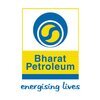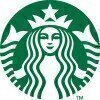Graduate Apprentice
40+ Graduate Apprentice Interview Questions and Answers

Asked in Cisco

Q. Inheritance in Java allows a class (subclass) to inherit properties and methods from another class (superclass). This promotes code reusability and establishes a hierarchical relationship between classes. Here...
read moreInheritance in Java enables code reusability and establishes class hierarchies.
Single Inheritance: Class Dog inherits from class Animal.
Multilevel Inheritance: Class Puppy inherits from Dog, which inherits from Animal.
Hierarchical Inheritance: Classes Dog and Cat both inherit from Animal.
Multiple Inheritance (through interfaces): Class implements interfaces Runnable and Comparable.
Hybrid Inheritance: A class inherits from a class and implements multiple interfaces.

Asked in LTIMindtree

Q. What are the different types of inheritance in Java, and can you explain the concept of interfaces? Additionally, code editor link was paste where I had to code and execute the code for interfaces .
There are four types of inheritance in Java: single, multilevel, hierarchical, and multiple. Interfaces in Java are used to achieve abstraction and multiple inheritance.
Types of inheritance in Java: single (one class extends one class), multilevel (class extends another class which extends another class), hierarchical (multiple classes extend one class), multiple (one class implements multiple interfaces)
Interfaces in Java are like abstract classes with only abstract methods....read more
Graduate Apprentice Interview Questions and Answers for Freshers

Asked in LTIMindtree

Q. What is the difference between structured, unstructured, and semi-structured databases?
Structured databases have a well-defined schema, unstructured databases have no predefined schema, and semi-structured databases have some organizational properties but do not enforce a strict schema.
Structured databases have a well-defined schema with tables, rows, and columns (e.g. SQL databases)
Unstructured databases store data without a predefined schema, allowing for flexibility in data types and structures (e.g. NoSQL databases)
Semi-structured databases have some organi...read more

Asked in Bosch Chassis Systems

Q. What are the steps involved in Lean Six Sigma?
Lean Six Sigma involves a structured approach to process improvement by reducing waste and variability.
Define the problem and set goals
Measure current performance and collect data
Analyze the data to identify root causes
Improve the process by implementing solutions
Control the process to sustain improvements
Use tools such as process mapping, statistical analysis, and DMAIC methodology
Examples include reducing defects in manufacturing, improving patient wait times in healthcare,...read more

Asked in Bharat Petroleum

Q. What are the different types of heat transfer, and what are the laws associated with each type?
Heat transfer occurs via conduction, convection, and radiation, each governed by specific laws.
Conduction: Transfer of heat through a solid material. Example: A metal spoon getting hot in a pot of boiling water.
Convection: Transfer of heat through fluids (liquids or gases) due to movement. Example: Warm air rising in a room.
Radiation: Transfer of heat through electromagnetic waves. Example: Feeling warmth from the sun on your skin.

Asked in Kaynes Technology

Q. Are you willing to work anywhere in India?
Yes, I am open to working from anywhere in India, embracing diverse experiences and opportunities.
Flexibility: I can adapt to different work environments, whether urban or rural.
Cultural Exposure: Working in various regions allows me to understand local cultures and practices.
Networking: I can build a diverse professional network across India.
Remote Work: I am comfortable with remote work tools, making it easy to collaborate from any location.
Graduate Apprentice Jobs




Asked in Bharat Petroleum

Q. What is the process involved in a Crude Distillation Unit?
Crude Distillation Unit separates crude oil into various fractions based on boiling points through heating and condensation.
Heating: Crude oil is heated in a furnace to around 350-400°C.
Distillation Column: The heated oil enters a distillation column where it rises and cools.
Fractionation: Different components separate based on boiling points; lighter fractions rise to the top.
Collection: Fractions like gasoline, kerosene, and diesel are collected at different levels.
Reflux: ...read more

Asked in Tata AutoComp Systems

Q. How will you solve quality-related problems?
I will solve Quality related problems by identifying root causes, implementing corrective actions, and continuously monitoring for improvements.
Identify the root cause of the quality problem through data analysis and process evaluation
Implement corrective actions to address the identified issues
Establish quality control measures to prevent future problems
Continuously monitor and evaluate the effectiveness of the solutions implemented
Engage with stakeholders to gather feedback...read more
Share interview questions and help millions of jobseekers 🌟


Asked in Bharat Petroleum

Q. What's the difference between P&ID and PFD?
P&ID (Piping and Instrumentation Diagram) details system components, while PFD (Process Flow Diagram) provides a high-level overview.
P&ID includes detailed information about piping, valves, and instrumentation.
PFD focuses on the overall process flow and major equipment.
Example: P&ID shows control loops and safety systems; PFD shows the sequence of operations.
P&ID is used for construction and maintenance; PFD is used for process design and optimization.

Asked in Bharat Petroleum

Q. What is the operating pressure of VGO-HDT in BPCL?
The operating pressure of VGO-HDT in BPCL is crucial for optimizing hydrocracking processes.
VGO-HDT stands for Vacuum Gas Oil Hydrocracking Unit.
Typical operating pressures range from 50 to 200 bar.
Higher pressures can enhance the conversion of heavy oils.
BPCL may adjust pressures based on feedstock and desired product specifications.

Asked in Bharat Petroleum Mumbai Refinery

Q. Draw the plan, elevation, and side view.
The candidate is asked to draw the plan, elevation, and side view of a given object.
Start by drawing the plan view, which shows the object from above
Next, draw the elevation view, which shows the object from the front or side
Finally, draw the side view, which shows the object from the side
Use proper scale and dimensions to accurately represent the object

Asked in Bharat Petroleum

Q. Draw the P&ID of heat exchanger, NRV, control valve, globe valve, and pump.
P&ID for a heat exchanger includes symbols for valves, pumps, and flow direction for process control.
Heat Exchanger: Symbolized by two parallel lines with a heat transfer symbol.
Non-Return Valve (NRV): Represented by a triangle pointing in the flow direction.
Control Valve: Shown as a circle with a diagonal line, indicating flow regulation.
Globe Valve: Depicted as a circle with a 'V' shape inside, used for throttling.
Pump: Illustrated as a circle with a 'P' inside, indicating ...read more
Asked in BPCL Kochi Oil Refinery

Q. What are sensors and name different sensors
Sensors are devices that detect and respond to input from the physical environment.
Sensors can measure various parameters such as temperature, pressure, light, motion, proximity, etc.
Examples of sensors include temperature sensors (thermocouples, thermistors), pressure sensors (piezoelectric sensors, strain gauges), light sensors (photodiodes, phototransistors), motion sensors (accelerometers, gyroscopes), proximity sensors (inductive, capacitive)
Sensors can be categorized as...read more

Asked in LTIMindtree

Q. What is the SQL command to...?
SQL command to retrieve data from a database table
Use SELECT statement to retrieve data
Specify the columns to retrieve after SELECT keyword
Specify the table name after FROM keyword
Use WHERE clause to add conditions for data retrieval

Asked in Sandvik Asia

Q. What is the function of coolant?
Coolant is used to regulate the temperature of a machine or engine by absorbing heat and dissipating it elsewhere.
Coolant prevents overheating of the machine or engine
It absorbs heat generated by the machine or engine
It dissipates the absorbed heat elsewhere
Coolant also prevents corrosion and rusting of the machine or engine
Examples of coolants include water, ethylene glycol, and propylene glycol

Asked in LTIMindtree

Q. Explain the projects you have worked on, including the models and languages used.
I have experience working on projects involving the development of models using programming languages such as Python and R.
Developed predictive models using Python libraries like scikit-learn and TensorFlow
Utilized R for statistical analysis and data visualization
Implemented machine learning algorithms to optimize business processes

Asked in Bharat Petroleum

Q. What are Boyle's Law and Charles's Law?
Boyle's Law relates pressure and volume of gas, while Charles's Law relates volume and temperature.
Boyle's Law: P1V1 = P2V2 (Pressure inversely proportional to volume at constant temperature). Example: Syringe action.
Charles's Law: V1/T1 = V2/T2 (Volume directly proportional to temperature at constant pressure). Example: Balloon expanding in heat.
Both laws are fundamental in understanding gas behavior in physics and chemistry.

Asked in LTIMindtree

Q. What are classes and objects?
A class is a blueprint for creating objects, while an object is an instance of a class.
A class defines the properties and behaviors of objects.
An object is a specific instance of a class.
Classes can have attributes (variables) and methods (functions).
Objects can interact with each other by calling methods on each other.
Example: Class 'Car' can have attributes like 'color' and 'model', while an object 'myCar' can be an instance of the 'Car' class.


Q. What is a time study?
Time study is a method used to determine the time required to perform a specific task or activity.
Time study involves observing and measuring the time taken to complete a task.
It helps in setting standards for productivity and efficiency.
Time study can be used to identify bottlenecks and improve processes.
It is commonly used in industrial engineering and manufacturing.
Example: Conducting a time study to determine the average time taken to assemble a product.
Asked in BPCL Kochi Oil Refinery

Q. What are the methods to transfer data?
Data can be transferred through methods like wired connections, wireless connections, and cloud storage.
Wired connections: using cables like Ethernet cables or USB cables to transfer data between devices.
Wireless connections: using technologies like Wi-Fi, Bluetooth, or NFC to transfer data without cables.
Cloud storage: uploading data to remote servers over the internet for access from anywhere.
Data transfer protocols: using protocols like FTP, HTTP, or SMTP to transfer data ...read more

Asked in Bosch

Q. How plastic bottles are manufactured
Plastic bottles are manufactured through a process called blow molding, where plastic is melted and formed into a bottle shape.
Plastic pellets are melted and formed into a tube shape called a parison.
The parison is placed into a mold, which is then inflated with air to take the shape of the mold.
The bottle is cooled and removed from the mold, then trimmed and inspected for quality.
Common plastics used for bottle manufacturing include PET, HDPE, and PVC.
The process can be adju...read more

Asked in ESC India

Q. What is a motor, and what are the different types of motors?
A motor is a device that converts electrical energy into mechanical energy. Types include DC motors, AC motors, stepper motors, etc.
Motor is a device that converts electrical energy into mechanical energy
Types of motors include DC motors, AC motors, stepper motors, etc.
DC motors operate on direct current and are commonly used in appliances and vehicles
AC motors operate on alternating current and are used in household appliances and industrial machinery
Stepper motors move in p...read more

Asked in Bosch Chassis Systems

Q. Explain 5S in brief.
5S is a workplace organization method that aims to improve efficiency and productivity by eliminating waste and optimizing workflow.
Sort - separate necessary items from unnecessary ones
Set in order - arrange necessary items in a logical and efficient manner
Shine - clean and inspect the work area regularly
Standardize - establish procedures and guidelines for maintaining the 5S system
Sustain - ensure that the 5S system is continuously implemented and improved upon
Example: organ...read more

Asked in Hindustan Aeronautics

Q. What are your reasons for selecting Aeronautical Engineering?
Passion for aviation, interest in aircraft design and technology, desire to contribute to the aerospace industry.
Fascination with airplanes and spacecraft since childhood
Strong interest in physics and mathematics
Desire to work on cutting-edge technology and innovation in aerospace
Passion for contributing to the advancement of aviation industry
Inspired by the challenges and opportunities in aeronautical engineering

Asked in Airports Authority of India

Q. What are modulation schemes?
Modulation schemes are techniques used to encode digital information onto an analog signal.
Modulation schemes are used in communication systems to transmit digital information over analog channels.
They involve encoding the digital information onto a carrier signal by varying one or more of its properties such as amplitude, frequency or phase.
Examples of modulation schemes include Amplitude Modulation (AM), Frequency Modulation (FM), Phase Shift Keying (PSK) and Quadrature Amp...read more

Asked in Sasken

Q. How do you add a new column to a table?
To add a new column to a table, use the ALTER TABLE statement in SQL, specifying the column name and data type.
Use the SQL command: ALTER TABLE table_name ADD column_name data_type;
Example: ALTER TABLE Employees ADD Age INT;
You can also specify constraints: ALTER TABLE Employees ADD Email VARCHAR(255) NOT NULL;
To add multiple columns: ALTER TABLE Employees ADD (Phone VARCHAR(15), Address VARCHAR(255));

Asked in Bharat Petroleum

Q. explain about hydrotreating and hydrocracking.
Hydrotreating and hydrocracking are two refining processes used to improve the quality of petroleum products.
Hydrotreating involves the use of hydrogen and a catalyst to remove impurities such as sulfur, nitrogen, and metals from crude oil or other feedstocks.
Hydrotreating helps to produce cleaner fuels with lower sulfur content, which is important for meeting environmental regulations.
Hydrocracking is a more severe process that breaks down large hydrocarbon molecules into sm...read more

Asked in Bharat Petroleum

Q. What is the Joule-Thomson effect?
The Joule-Thomson effect describes the temperature change of a gas when it expands or is compressed without heat exchange.
Occurs when a gas expands or is compressed at constant enthalpy.
For most gases, expansion leads to cooling (negative Joule-Thomson coefficient).
Example: Cooling of gases in refrigeration systems.
Some gases, like helium, can heat up upon expansion (positive Joule-Thomson coefficient).
Used in liquefaction processes for gases.

Asked in Zydus Lifesciences

Q. Strokes of engine of diesel engine
A diesel engine has four strokes: intake, compression, power, and exhaust.
Intake stroke: Air is drawn into the cylinder.
Compression stroke: Air is compressed to increase temperature and pressure.
Power stroke: Fuel is injected and ignited, causing the piston to move downward.
Exhaust stroke: Waste gases are expelled from the cylinder.

Asked in GAIL

Q. What is the work culture like at GAIL INDIA LIMITED?
GAIL India Limited fosters a collaborative, innovative, and safety-focused work culture, emphasizing employee growth and sustainability.
Strong emphasis on safety protocols, ensuring a secure working environment for all employees.
Encourages teamwork and collaboration across various departments to enhance productivity.
Focus on continuous learning and development through training programs and workshops.
Promotes a culture of innovation, encouraging employees to contribute ideas f...read more
Interview Questions of Similar Designations
Interview Experiences of Popular Companies








Reviews
Interviews
Salaries
Users

















